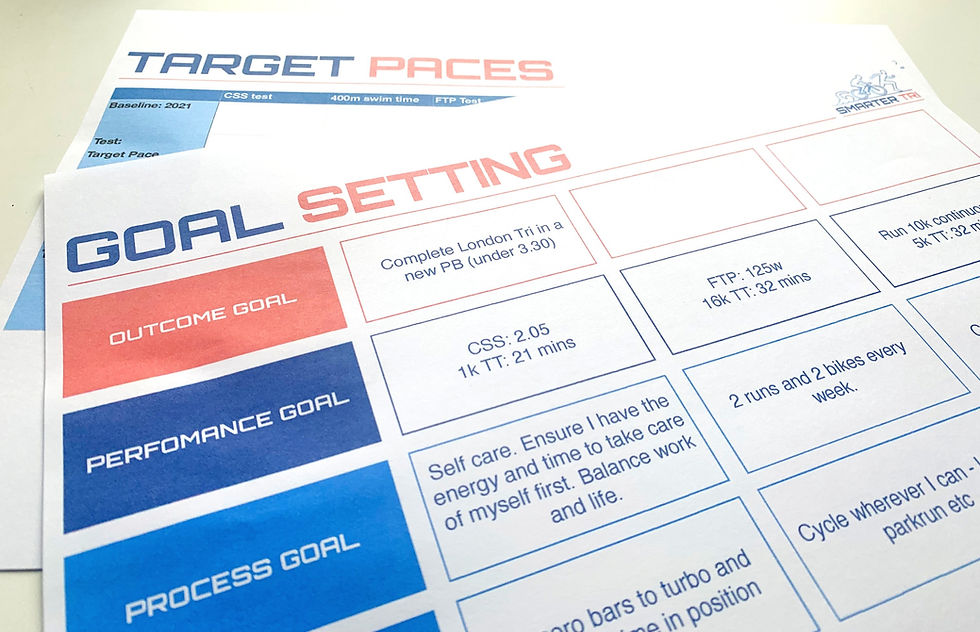WHY FLEXIBILITY AND MOBILITY ARE IMPORTANT FOR A TRIATHLETE
- Jo Watkinson
- Mar 31, 2022
- 3 min read
Updated: Feb 23, 2023

As a triathlete, I bet you swim, bike and run a lot, right? Yep. Thought so. And do you do Strength work...? Maybe? Most of you probably will. And what about flexibility and mobility? Do you do anything to promote that?
As athletes, flexibility and mobility is an important part of our training but it's common for it to be overlooked. First things first though, what are they? Flexibility refers to the length of your muscles while mobility is all about the range of movement in your joints. It's possible to have very flexible calves but have a poor range of movement in your ankles at the same time, although if you have tight muscles that often inhibits joint movement as well, so in that case we'd need to look at both areas.
The key thing with flexibility and mobility is that when it comes to minimising injury risk and improving performance, the ability to move through the required range of motion for your activity is essential.
So why is this so important for triathletes?
The length of your muscles and the range of movement in your joints directly affects your performance across all three disciplines.
In the swim, a poor range of movement through the knees and ankle joints combined with a lack of flexibility in the hamstrings can result in a lot of drag from your kick - those flexed feet and bent knees literally act as anchors behind you. A limited range of movement through the shoulders and upper back can affect your arm recovery and rotation, which in turn effects your body position, hand entry and therefore your ability to put the power down quickly.
On the bike, working on your hamstring flexibility and the mobility of your lower back can help to improve your comfort for all riders. If you also want to be able to maintain a good aero position, then your upper back, shoulders and neck are also worth paying attention to.
Studies in pro-cycling have also found that repetitive pedalling can lead to a restricted range of motion in general, and potentially long-term muscles imbalances. They tested professional road cyclists and found that overall, hip flexion (the motion of bringing your hip forward) was more restricted in the non-dominant limb, and knee flexion (the motion of bringing your knee forward) and ankle dorsiflexion (the extension of your foot at the ankle) was restricted in both sides. There were some differences in men and women, with women having slightly more range of motion in hip flexion and in the ankles. So if you spend a lot of time on the bike, and especially if you are male, flexibility and mobility work through the legs, back and neck are key for you.
During the run, we use our flexibility and mobility to drive our propulsion. We need flexibility through our hamstrings and calves to achieve the best propulsion, combined with mobility through our hips, ankles and toes so that we can power off with every single step.
Your recovery leg also needs decent mobility too. A good range of movement through the hips is needed for a full leg swing, combined with the need to bend your knee so you can pick that leg up at the front of your recovery swing. The range of movement that you have on your recovery swing is directly connected to your stride length, so if your mobility is poor, often you'll have a shorter stride length. Improving your mobility can allow you to lengthen your stride for the same effort level, and I'm always in favour of anything that improves your run economy.
What to do about it...
You don't need to do anything extreme. We're not aiming for huge range of movement here or to be super-bendy. You don't need to be a contortionist... but you do need to ensure that you have a normal range of movement, and unfortunately a lot of triathletes don't have that. If you think this might be you, get in touch for a movement assessment. We'll look at all of the key movement patterns that affect you as a triathlete and I can prescribe exercises for you that will improve your flexibility and mobility in any areas that you need help. We're all short on time, so it's personalised and tailored to you, which means you know that the work you are doing is going to be exactly what you need to train and race to your best.



Comments